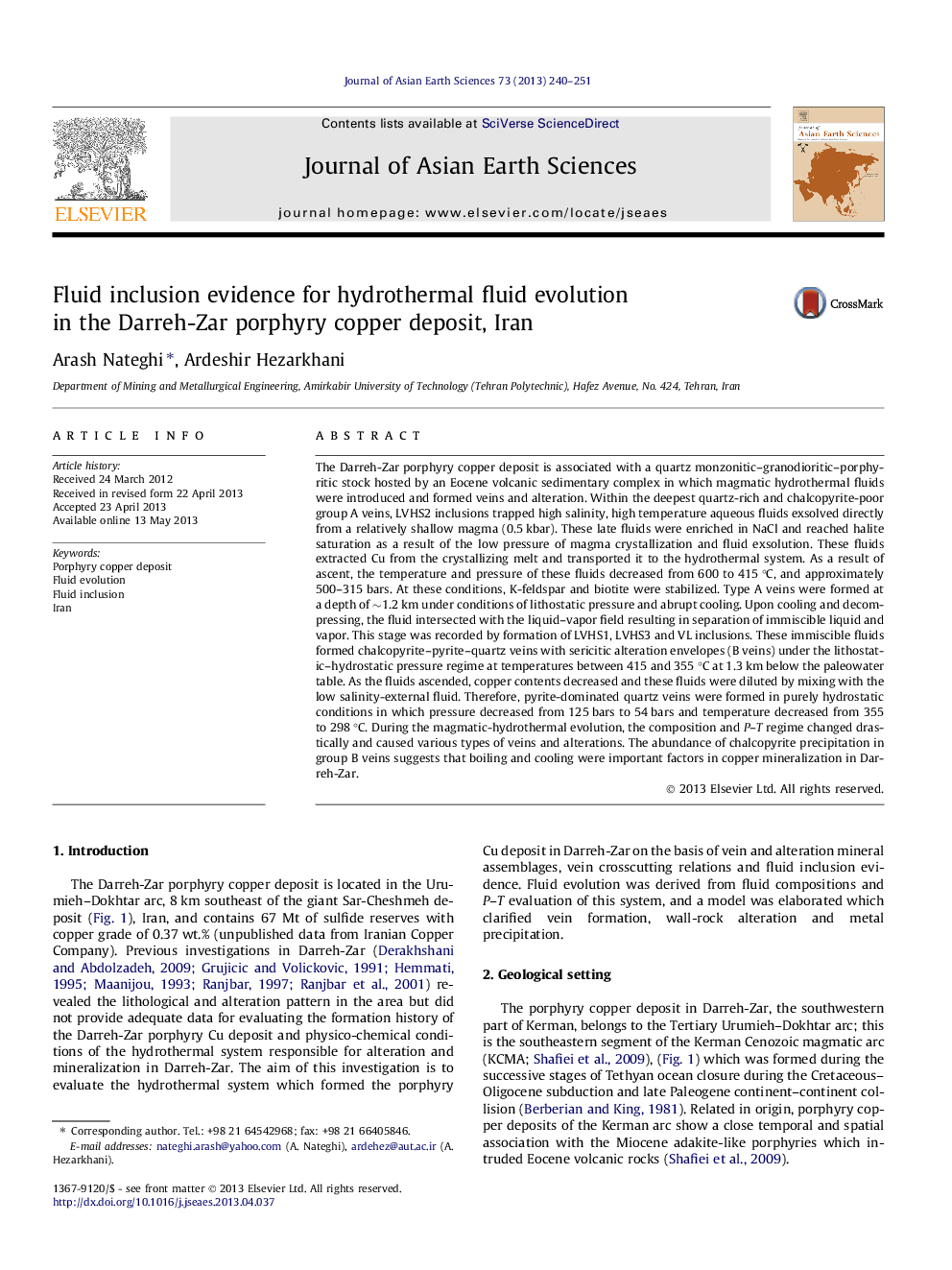| کد مقاله | کد نشریه | سال انتشار | مقاله انگلیسی | نسخه تمام متن |
|---|---|---|---|---|
| 6444494 | 1640394 | 2013 | 12 صفحه PDF | دانلود رایگان |
عنوان انگلیسی مقاله ISI
Fluid inclusion evidence for hydrothermal fluid evolution in the Darreh-Zar porphyry copper deposit, Iran
ترجمه فارسی عنوان
شواهد ورودی مایع برای تکامل سیال هیدروترمال در سپرده مس پورفیری دره زار، ایران
دانلود مقاله + سفارش ترجمه
دانلود مقاله ISI انگلیسی
رایگان برای ایرانیان
کلمات کلیدی
سپرده مس پورفیری، تکامل مایع، ورودی مایع، ایران،
موضوعات مرتبط
مهندسی و علوم پایه
علوم زمین و سیارات
زمین شناسی
چکیده انگلیسی
The Darreh-Zar porphyry copper deposit is associated with a quartz monzonitic-granodioritic-porphyritic stock hosted by an Eocene volcanic sedimentary complex in which magmatic hydrothermal fluids were introduced and formed veins and alteration. Within the deepest quartz-rich and chalcopyrite-poor group A veins, LVHS2 inclusions trapped high salinity, high temperature aqueous fluids exsolved directly from a relatively shallow magma (0.5 kbar). These late fluids were enriched in NaCl and reached halite saturation as a result of the low pressure of magma crystallization and fluid exsolution. These fluids extracted Cu from the crystallizing melt and transported it to the hydrothermal system. As a result of ascent, the temperature and pressure of these fluids decreased from 600 to 415 °C, and approximately 500-315 bars. At these conditions, K-feldspar and biotite were stabilized. Type A veins were formed at a depth of â¼1.2 km under conditions of lithostatic pressure and abrupt cooling. Upon cooling and decompressing, the fluid intersected with the liquid-vapor field resulting in separation of immiscible liquid and vapor. This stage was recorded by formation of LVHS1, LVHS3 and VL inclusions. These immiscible fluids formed chalcopyrite-pyrite-quartz veins with sericitic alteration envelopes (B veins) under the lithostatic-hydrostatic pressure regime at temperatures between 415 and 355 °C at 1.3 km below the paleowater table. As the fluids ascended, copper contents decreased and these fluids were diluted by mixing with the low salinity-external fluid. Therefore, pyrite-dominated quartz veins were formed in purely hydrostatic conditions in which pressure decreased from 125 bars to 54 bars and temperature decreased from 355 to 298 °C. During the magmatic-hydrothermal evolution, the composition and P-T regime changed drastically and caused various types of veins and alterations. The abundance of chalcopyrite precipitation in group B veins suggests that boiling and cooling were important factors in copper mineralization in Darreh-Zar.
ناشر
Database: Elsevier - ScienceDirect (ساینس دایرکت)
Journal: Journal of Asian Earth Sciences - Volume 73, 5 September 2013, Pages 240-251
Journal: Journal of Asian Earth Sciences - Volume 73, 5 September 2013, Pages 240-251
نویسندگان
Arash Nateghi, Ardeshir Hezarkhani,
